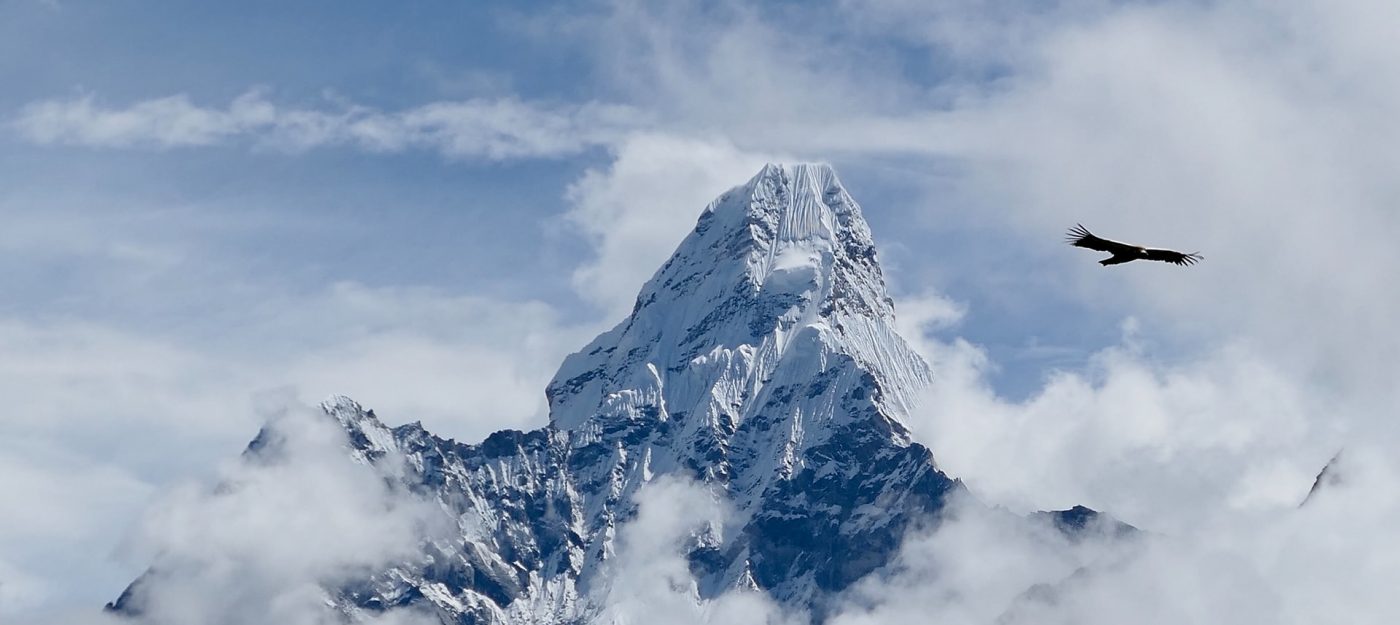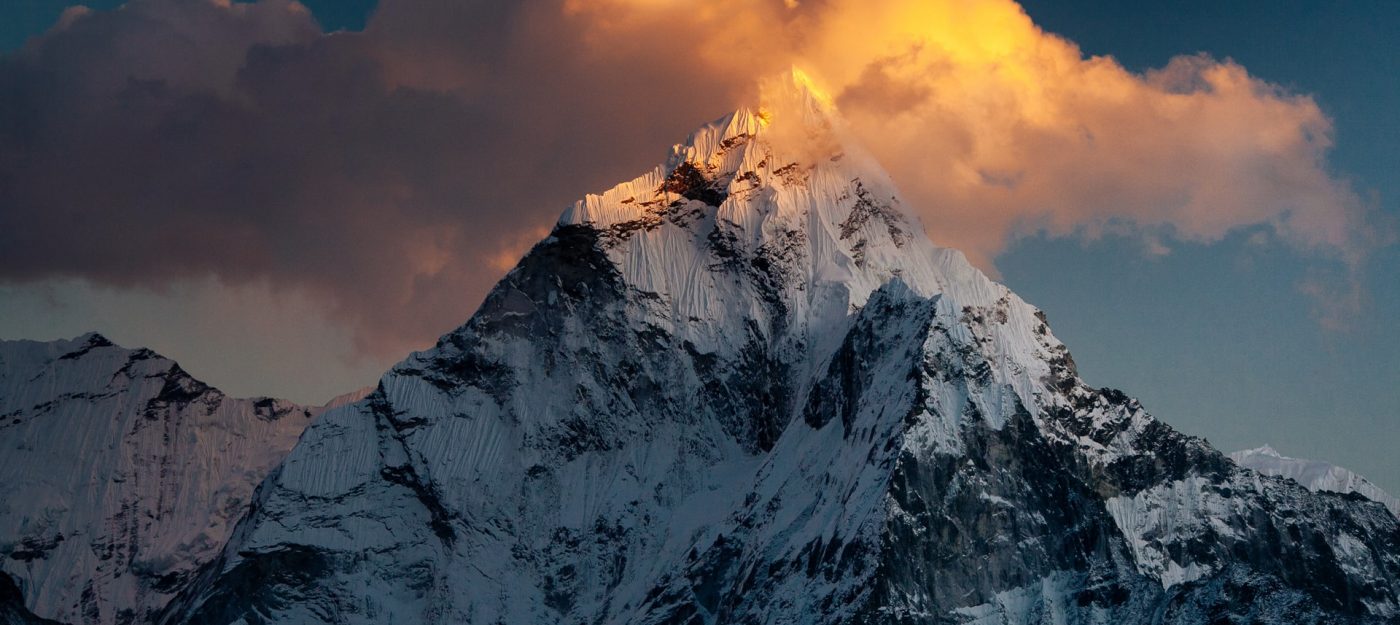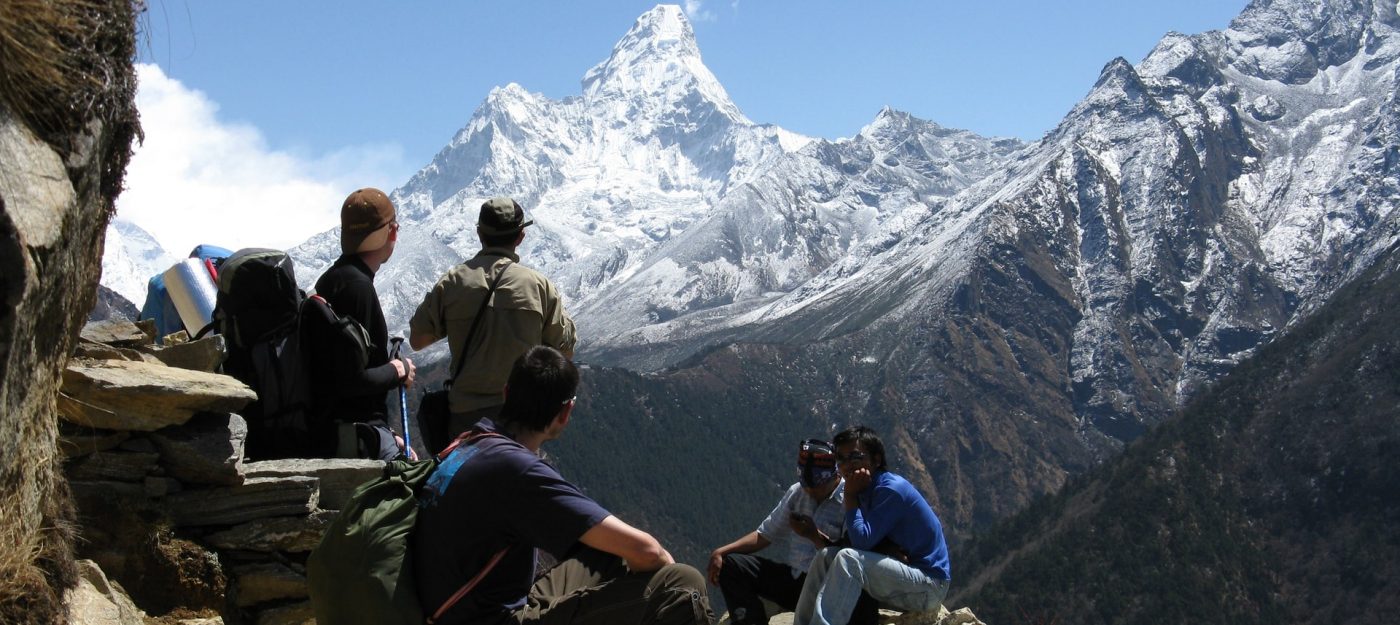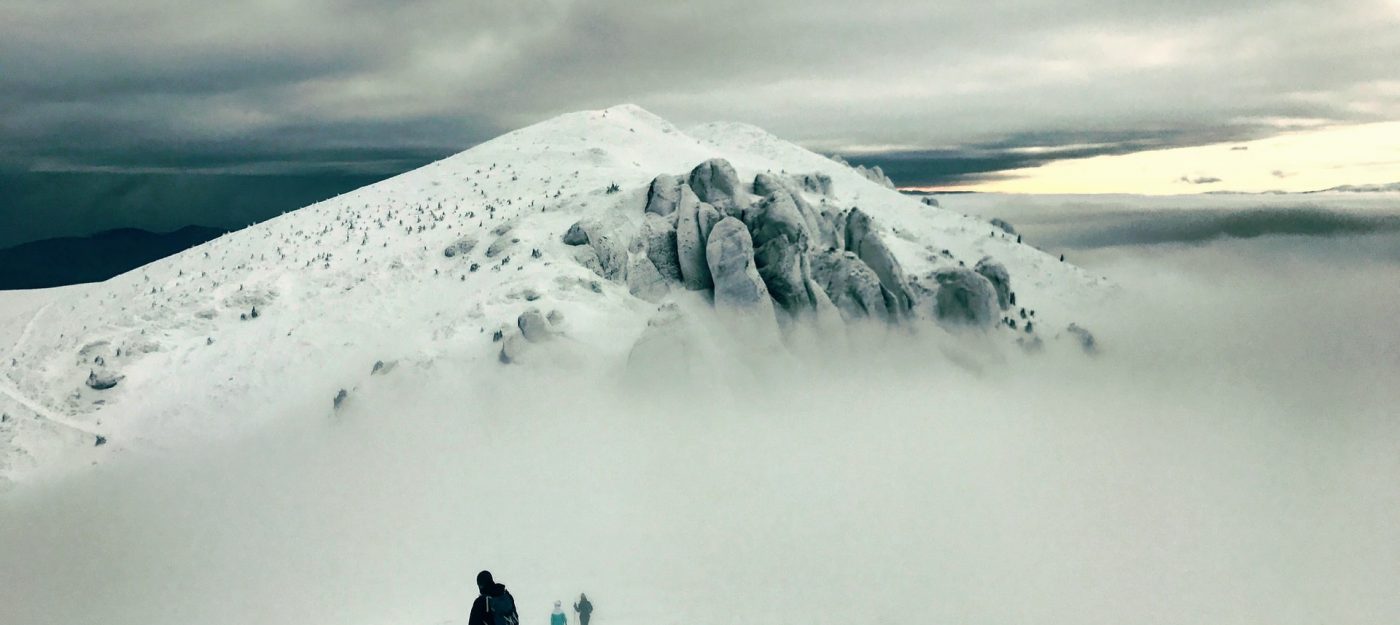
How hard is it to climb Mount Ama Dablam
Ama Dablam, a mountain in Nepal’s eastern Himalayan range, is 6,812 meters high (22,349 ft). Ama Dablam literally translates to “Mother’s necklace.” This peak’s shape resembles the lengthy ridges of a mother shielding her infant, with long ridges on each side. Anyone who looks at Ama Dablam is captivated. And, in this article, we will talk about the Ama Dablam Expedition Difficulty.
You are enthralled by the view and yearn for more. Here, the more you wander, the more breathtaking and fascinating the scenery seems to you. It all comes with the Ama Dablam Expedition. This walk can give you everything, from cultural exploration to extreme activity to breathtaking mountain views. A€nd, in this article we will discuss the Ama Dablam Expedition Difficulty.
Therefore, this trek is suited for those who want to cut their trekking days short while still taking advantage of the best of the Everest region. We will learn everything there is to know about the Ama Dablam Expedition Difficulty right here.

Highlights of the Ama Dablam Expedition
- Trek to Ama Dablam’s base camp.
- Be astounded by the expansive panorama of Everest and the other summits.
- exploration of the thriving “capital” of the Sherpa culture Namche Market
- Visit the renowned Khunde hospital and Sir Edmund Hillary’s “Schoolhouse in the Clouds”
- Discover Thyangboche’s gorgeously placed monastery.
- From Kathmandu, take a picturesque flight to Lukla.
One of the most breathtakingly exposed Himalayan mountains in the Everest region is Ama Dablam, which is well recognized for this. One of the mountains that mountaineering enthusiasts are keeping an eye on is this one. The Ama Dablam Expedition is a difficult climbing task in and of itself.
On March 13th, 1961, a scientific expedition led by Sir Edmund Hillary from the Silver Hut became the first to reach the summit. For many mountaineers, climbing Ama Dablam has always been a dream. Trekkers might select the Southwest ridgeline as well, as it is the safest way to ascend this beautiful peak.
Ama Dablam Expedition Difficulty
Although Ama Dablam Expedition is an altitude-friendly trek in comparison to other summits, it is nonetheless technically difficult and difficult.
Despite being one of the simpler treks, it is extremely difficult for beginners. This summit, which is 6812 meters high, has a lot of difficult terrains. While climbing Ama Dablam, the climbers encountered a number of challenges. We may be anxious about problems with the weather, altitude sickness, avalanches, falls, etc.
There will undoubtedly be several obstacles when beginning the difficult trip. The aim of every hiker is to reach the summit after overcoming all the challenges. So, these are the things that adds to your Ama Dablam Expedition Difficulty.
The Ama Dablam expedition’s level of difficulty ranges from moderate to severe, offering easy, moderate, and hard experiences. The beautiful ridge between Camp I and Camp III contains several briefs, steep stretches of the trail as well as nearly vertical ice and rock. Climbing High Camp-I is simple.
The road from High Camp II, however, is primarily made up of steep rocks, snow, ice glaciers, etc. For the climbers, this might be challenging, but not impossible. A long and steep trek over the glacier of snow and ice is necessary to reach the peak, and it demands both strength and skill.
The difficulty of the Ama Dablam Expedition
Here are a few of the challenges one can encounter when on an Ama Dablam expedition.
When climbing Mt. Ama Dablam, altitude sickness can become a serious problem. Although Mt. Ama Dablam is higher than 6000m, altitude sickness only occurs at elevations above 2500m. Altitude sickness is therefore likely to be highly common at that high altitude.
The summit’s next problem might be the weather or the temperature. The alpine region experiences harsh and erratic weather. It may be snowing heavily right now, or the temperature always falls to the freezing point.
the routes or trails. The path to the expedition of the Himalayas is much rougher and more challenging than one could anticipate, unlike the paths of any other region. Even venturing outside in the Himalayas and climbing Ama Dablam require extra caution. Therefore, these are the things that might add to your Ama Dablam Expedition Difficulty.
Other unpredictabilities that climbers must deal with in the Everest region include avalanches and falls.
The adventure includes steep and vertical mixed rock, ice, and snow climbing on Ama Dablam as well. It will therefore be better if you have prior rock and ice climbing experience.
How hard is it to climb Mount Ama Dablam?
The journey to the mountainous area is never simple. If you have some prior experience, it is better. It does not imply, however, that beginners should not choose mountain trips. The trip to the Himalayas can be made much more comfortable and straightforward with the right training and planning.
Similarly, the Ama Dablam Expedition. If you climb this mountain without any training, it could be really difficult. Ama Dablam is a challenging technical climb that gets easier with some prior rock climbing skills. Ama Dablam Peak is a difficult adventure in Nepal’s Khumbu region of the wild and inaccessible northern Himalayas.
As opposed to the remote Chukkung Valley, the trails pass through the Sherpa communities of the Dudh Koshi Valley. But, you should know that the mountain is not that difficult and might add to your Ama Dablam Expedition Difficulty.
Mount Ama Dablam
Ama Dablam became one of the most challenging mountains in Nepal to climb. Since climbing requires the use of technical tools like ice ax, ropes, hammers, ascenders, etc. By the time you get to camp one, the climbing becomes difficult. From here, one must ascend the snow-covered rocks by taking various little ridges.
So, following camp II, you will come to a 15 m pitch. The most difficult part of this journey is this pitch. The summit of the steep-facing peak gives spectacular views of the Everest range and nearby mountains in addition to numerous modest, steady steps in the freezing camps. The peak is best suited for mountaineers with prior climbing expertise due to the ascending difficulty.
Despite the difficulties, fixed ropes and a clearly marked route make the climb simpler. The adventure does, however, include steep and vertical mixed rock, ice, and snow climbing. The most crucial factor is hence physical fitness. In order to climb the mountain safely, it is also preferable for the trekkers to have previous climbing expertise, physical stamina, and strength. Even though reaching the top is never simple, it is feasible with a little mortal’s help.
Your goal of climbing Ama Dablam can come true with the aid of guides, porters, and technical equipment with a little more physical capacity.

Mount Ama Dablam Difficulty
However, due to its elevation of 6812m, the excursion to the Ama Dablam is one of the more challenging treks in Nepal’s Everest region. In addition, without prior training and planning, the walk may be a little more difficult for beginners and intermediate hikers.
The steep and slick paths, the significant amounts of snow and rain, altitude sickness, and primarily the weather conditions all make the climb more difficult. Additionally, many climbers find the travel to the Himalayan region of Nepal at a height of more than 5000m to be unfamiliar and difficult.
Ama Dablam’s expedition requires a significant amount of commitment and effort. The mountaineers must put in extra effort and maintain a high level of physical fitness, endurance, and spirit. The Ama Dablam expedition is faced with a number of difficulties. Altitude sickness is a serious issue that can result from elevation. In addition, the hours of walking wear you out.
The path is rocky and uneven, making it challenging to walk, and you have to ascend and descend it. You must therefore overcome significant obstacles, yet the voyage will be worthwhile despite the difficulties. So, these are the things that might add to your Ama Dablam Expedition Difficulty.
Here are a few things that make the Ama Dablam trip so difficult.
High Altitude and Elevation
When climbing Ama Dablam, altitude and elevation might become a significant challenge. Even if it may be an altitude-friendly walk in comparison to another climb above 8000m, the difficulties one must overcome are the same. The Ama Dablam expedition may be seen from its 6812m elevation.
Contrarily, you need to utilize specialized tools such as an ice ax, ropes, crampons, ice screws, and Jumars. Here, height becomes one of the biggest obstacles. Ama Dablam’s expedition requires a significant amount of commitment and effort. The mountaineers must put in extra effort and maintain a high level of physical fitness, endurance, and spirit. The Ama Dablam expedition is faced with a number of difficulties.
Altitude sickness is a serious issue that can result from elevation. In addition, the hours of walking wear you out. The path is rocky and uneven, making it challenging to walk, and you have to ascend and descend it. You must therefore overcome significant obstacles, yet the voyage will be worthwhile despite the difficulties. So, this is the thing that might add to your Ama Dablam Expedition Difficulty.
Weather and Temperature
The extreme cold and wind of Ama Dablam Difficulty are further major challenges. Ama Dablam’s weather is constantly changing and never stays the same. Trekkers may experience a more serious problem with adaptation than in any other mountains of comparable height. Trekking late can be difficult due to the unpredictability of the weather. Additionally, the temperature dropped below freezing during the winter nights, which is extremely cold for a night’s stay.
Altitude Sickness
Extreme cases of altitude sickness can be fatal. When climbing to Ama Dablam, altitude sickness becomes a significant issue due to the low oxygen levels in the high Himalayas. Since altitude sickness can begin anywhere at a height of 2500 meters. Headaches, respiratory issues, nausea, vomiting, fainting, etc. are possible symptoms. Therefore, if any of these issues arise, the traveler should blame it right away and take a break. This could endanger your life if it is not treated.
Avalanches and Falls
The Ama Dablam frequently experiences avalanches and falls. Avalanches are falling slabs of snow, rock, or ice. The climbers must put an end to their excursion and descend once an avalanche occurs. With so much snow falling, falls are often quite regular in the Ama Dablam. Falls account for the majority of the expedition’s fatalities. Climbing the upper ridges in higher camps is extremely risky.
How Long Does it Take to Climb Ama Dablam?
The Ama Dablam trek should be completed in 25 days to a month overall. This period of time often involves a few days in Kathmandu reviewing the itinerary before traveling to Lukla. The hikers can anticipate spending roughly five days hiking from here to base camp. Likewise, the actual ascent of Ama Dablam takes roughly two weeks. And, it is shorter than the Everest Expedition.
To properly acclimatize, however, the days will involve climbing to and descending from several mountain camps. It takes a few days to acclimatize properly. One must be at fault for a day in the event of an emergency. Weather, avalanches, and falls are a few other factors that are having an impact on the ascent.
The meeting might also be moved up to five days. Finally, without going to Camp III, the hikers may attempt a summit from Camp II.
As a result, it takes another four or five days to hike back to Lukla and then to Kathmandu after reaching the peak.
The official route for the trek to Ama Dablam is shown here. So, the duration might add to the Ama Dablam Expedition’s difficulty.

How Much Does it cost to climb Mount Ama Dablam?
The price of the Ama Dablam expedition might range from USD 6,000 to USD 8,000. However, the price typically varies according to the length of the walk and the number of participants. The pricing range of the trek’s inclusions can also vary. Therefore, it is advisable to check the price and compute it appropriately while also taking the included into account.
Arrive in Kathmandu
Sightseeing in Kathmandu
Fly to Lukla (2840m), trek to Monjo (2840m) ~5 hrs
Trek Monjo (2840m) to Namche (3440m) ~4 hrs
Acclimatisation day in Namche ~ 5 hrs
Trek Namche (3440m) to Debuche (3710m) ~ 5 hrs
Trek Debuche (3710m) to Amadablam base camp (4600m) ~4.5 hrs
Rest day in Amadablam base camp
Training day at base camp
Day trip base camp to 5800m
Rest and gear preparation
Climb base camp (4600m) to Camp 1 (5900m)
Climb Camp 1 (5900m) to Camp 2 (6100m), return to base camp (4600m)
Rest, contingency day and final Summit preparation
Rest
Climb base camp (4600m) to Camp 1 (5900m)
Camp 1 (5900m) to Camp 2 (6100m)
Similarly Camp 2 (6100m) to Camp 3 (6400m)
Likewise Camp 3 (6400m) to Summit (6856m), return to Camp 2 (6100m)
Again Camp 2 (6100m) to base camp (4600m)
Rest and pack up base camp
Trek base camp (4600m) to Namche (3440m) ~6 hr
Trek Namche (3440m) to Lukla (2840m) ~6hr
Fly Lukla to Kathmandu
In Kathmandu
Departure
The tour plan often includes transportation during the trip, porters, food, and lodging in addition to permits and admission fees. Gratuities are never included but are always expected for the driver, porter, and guides. Because it accounts for the vast majority of a porter’s salary. Prices, however, may vary depending on the situation, such as the weather, and whether the journey needs to be shortened or extended.
Experience required to climb Mount Everest
Climbers should be familiar with multi-pitch climbing (rock or ice), be at ease after grade 4 ice climbs, and have experience climbing at altitude (over 18,000 feet).
Climbers must have prior experience at elevations up to 18,000′.
To participate in this trip, climbers must be in peak physical and mental condition.
Climbing Routes to Ama Dablam
There are a total of eight distinct ascent routes to Ama Dablam’s summit. However, guides who are leading climbers to the top nearly exclusively take the Southwest Ridge Route. The remaining routes are typically only used by experienced mountaineers.
Southwest Ridge Route
The southwest Dodge route is the most well-liked one, whether it’s to Everest or Ama Dablam. A group of climbers from the US and New Zealand successfully ascended it for the first time in 1961. Since then, all expeditions now choose to take this path. This route will include three camps before the summit after reaching base camp. Aside from that, climbing takes 4 to 8 hours each day from base camp.
Base Camp to Camp 1
After leaving base camp, take the path that ascends the grassy slope and over a rocky terrain to get to the rarely visited advanced base camp, also known as Yak Camp. 5100M. Similar to that, keep an eye out from here for the infamous boulder field. SURVIVE HERE AS HIGH AS POSSIBLE. Rock scrambling is simple and poses no challenge to an experienced climber. Once you’ve reached the path that will take you to the bottom of the slabs, swing left and high. The slabs are directly beneath camp one. Although most people don’t require rope here, you can use one if you do.
Camp 1 to Camp 2
Early departure from camp is advised. Bring your heavy boots and approach shoes. When there is little to no snow, the track will be clearly defined. Most of the first hour is spent moving between stone blocks. After then, go steadily uphill and ahead, take in the scenery and the exposure, and you’ll eventually arrive at the yellow tower. Avoid going too high and maintain a low position until you reach the tower’s base. About one pitch is The Yellow Tower. Avoid looking down. After reaching the summit, this pitch climbs fairly directly to camp 2 at 6000 meters.
Camp 2 to Camp 3
From camp 2, you must make an airy traverse to the base of the 1.5-pitch, blocky granite mixed climb known as the Grey Tower. The tower, though, used to be frosty but is now as dry as dust. Keep in close proximity and communication with your climbing companions. The Grey Tower is blocky and tilted at around 75 degrees. It is extremely thrilling but also risky. A stunning airy cross leads to the Mushroom Ridge after the Grey Tower. At 6200M, you will cross a tightrope to get to Camp 3. Don’t sleep there because it’s really unsafe. From Camp 2, head up to the top.
Camp 3 to Summit
Alpine ice and snow climbing is the focus of Camp 3. Many teams choose to remain in camp 3 despite the danger involved. Depending on the time of year and the weather, Camp 3 is a combination of ice and snow over 6400 meters. Aim to arrive in camp three between 5:00 and 6:00 in the morning. This will allow you to take advantage of the sun’s warmth. Keep moving those toes and fingers because they will freeze if you don’t. Nevertheless, depending on how quickly you climb, it will take you roughly 4 hours to reach the top. This route has no incorrect summits, so you top off directly on the summit.
However, there are several ways to reach Ama Dablam’s top, including:
- After the Southwest Ridge Route, the Lower Route was the second route to be successfully climbed in April 1979.
- Since its first ascent in October 1979, the North Ridge Route has grown to be one of the primary alternatives to the Southwest Ridge Route.
- The East Ridge route, which is more difficult, was only recently successfully ascended after 1983.
- The 1985 first winter climb of Ama Dablam took place on the Northeast Route, which was the steepest.
- the west face’s Ariake-Sakashita Route.
- Vanja Furlan and Toma Humar were the first to ascend the northwest face’s Stane Belak-rauf Memorial Route in 1996
Best Season for Ama Dablam Expedition
This mountain can only be ascended in the fall and spring because of its harsh environment, weather, altitude, and geographic location.
Autumn
The greatest time to visit Nepal’s Himalayas is now. The mountains are at their best at this time of year, offering a wide-ranging panorama. Nepal’s hiking season, as well as the season for expeditions and summit attempts, is the fall. Since Ama Dablam is located in the Everest region, this time of year is one of the greatest for the Ama Dablam trip. Autumn in Nepal occurs in September, October, and November. The best of nature, as well as the weather and temperature, may be found at this time of year. Compared to other seasons, the weather around autumn is significantly more conducive to adventures. But it is true that the Himalayas experience intense and erratic weather.
But the voyage is refreshed and filled with new sorts of joy during the autumn. It gets comfortable enough to walk around in the atmosphere balances and modifies the dynamics of the ascent in the autumn, following the monsoon. Although all parts of mixed climbing will be present and prevalent, mountaineers should pay more attention to rock climbing and less to snow and ice. so, if you don’t travel here during the right time then it might add to your Ama Dablam Expedition Difficulty.
Spring
After autumn, spring is another favored time of year for the Ama Dablam journey. In Nepal, it is the months of March, April, and May. The weather will be a little more unpredictable in April and May than it is in the fall. The valley has a warm, humid climate. Additionally, the weather at base camp is the same and will quickly get colder as you ascend. Additionally, compared to autumn, the mountains will be more heavily coated in snow and ice in the spring. The lower areas of spring remain warm despite the colder temperatures at the upper elevations. Additionally, if you travel here during this time of the year then it will be very easy to counter all the Ama Dablam Expedition Difficulty.
On the other hand, springtime views are breathtaking. The peak is further revivified by the beautiful blue sky and the lush green vegetation.
Gears for Ama Dablam Expedition
- 3 locking carabiners
- 4 lightweight regular carabiners Ascender with handle
- Petzl Tlaloc
- 2 sewn 48″ nylon slings
- 10′ of 8mm per cord
- 1 small 5mm prusik loop
- Black Diamond ATC Guide
- Climbing Backpack: 70L
- Sleeping Bag rated to -20°F
- Sleeping Pads
- Ice Axe
- 12-point Crampons
- Climbing Harness
- Climbing Helmet
Camp Accessories
- Headlamp with extra batteries
- Water Bottles and Water Bottle Insulators
- Water Treatment:
- Lighter
- Insulated Cup, Bowl, Spoon
Footwear
- Double Climbing Boots with expedition liners or Triple boots
- Overboots and approach boots
- Socks
- Gaiters and Yaktrax or Kahtoola Microspikes
Clothing
- Insulated Parka: 800 Fill Down
- Insulated Pants and down Suit
- Shell JacketGore-Tex Pants
- Climbing Pants
- Base Layers 2 synthetic tops and 1 bottom
- Mid Layers
Outerwear Accessories
- Mittens: 8000-meter mittens
- Expedition Weight Gloves
- Light Gloves
- Leather gloves or good abrasion-resistant climbing gloves for the rock sections
- Winter Beanie
- Baseball hat and Bandana
- Sleeping Pad or Thermarest
- Neck Gaiter and/or a Buff
Personal Equipment
- Expedition and trekking Backpack.
- Sleeping Bag.
- Self Inflating pads
- Closed-Cell foam pad. used in combination with your self-inflating pad.
- Cooking Gear
- Spoon, Bowl
- Camp Knife or Multi-Tool.
- Thermos. 1 Liter capacity.
- Camera gear. Optional.
- Sunscreen and on-screen with SPF or Water Bottles
- Toiletry bag. Include toilet paper, hand sanitizer, and a small towel as well as a toothbrush, toothpaste,
Trekking Gear
- Trekking Poles
- Backpack
- Pack Cover
- Trekking Clothes
- Lightweight Approach Boots
- 5 large plastic garbage bags to pack gear inside duffels to protect gear from rain
Inquiry
If you want to know anything regarding the trip or any other issue, please feel free to ask us
